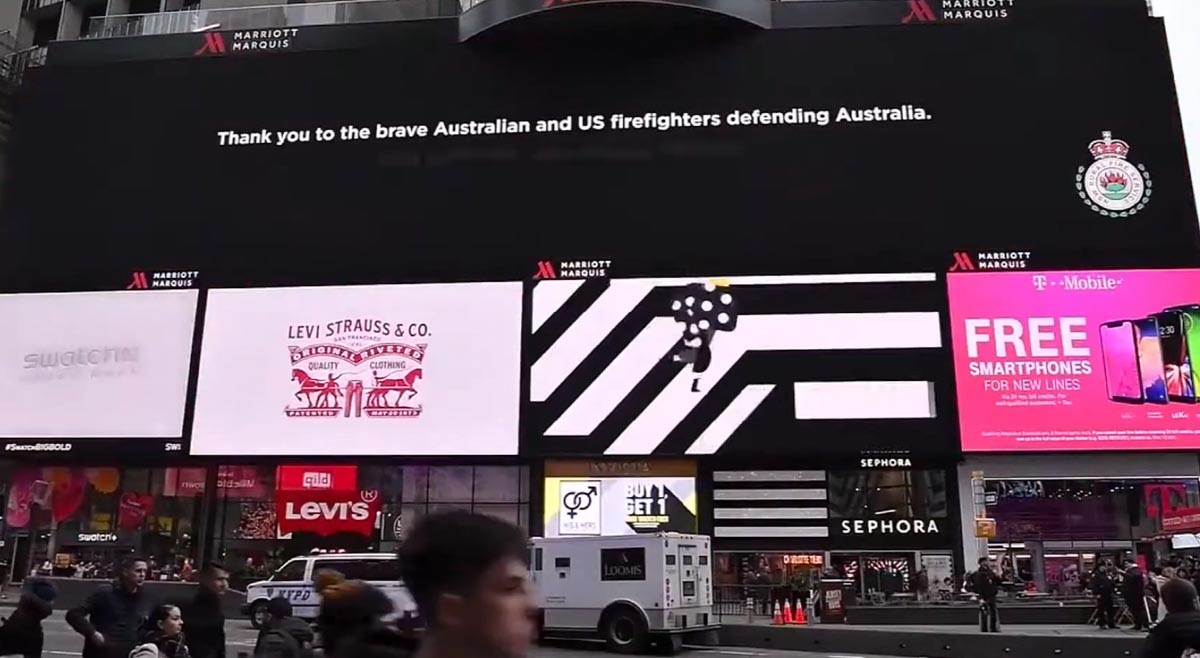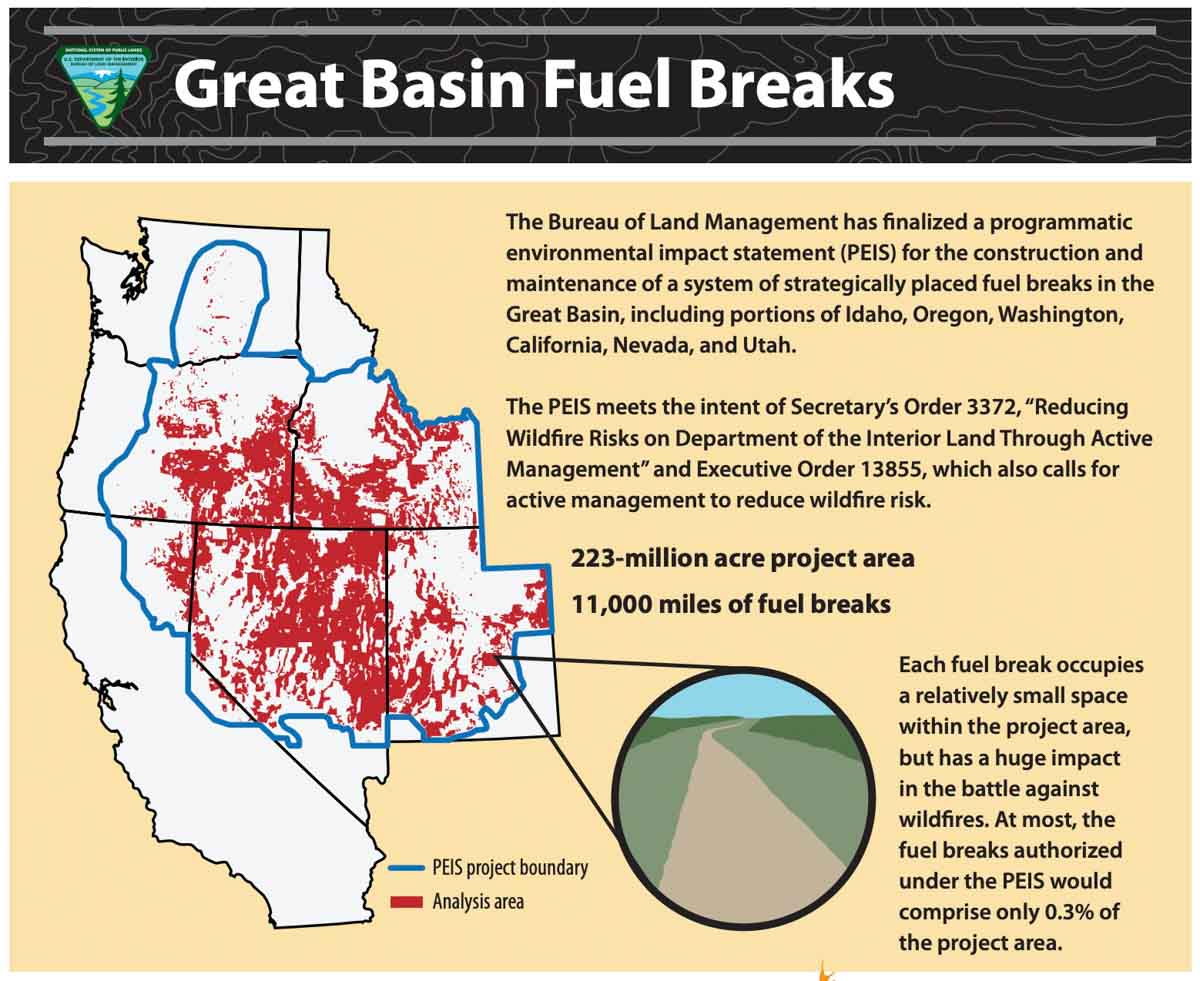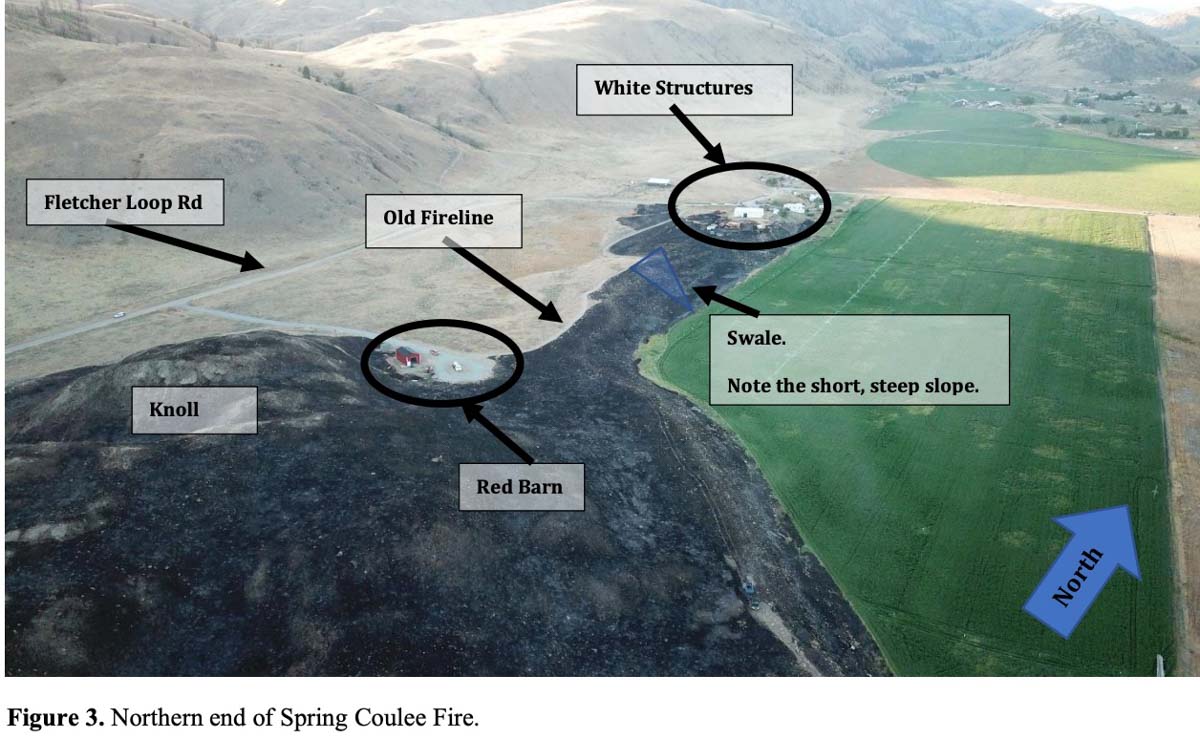A large electronic billboard in New York’s Times Square featured a video message this week thanking the firefighters from the United States and Australia that worked on the bushfires in Australia.
Statements from five presidential candidates about wildland fire
They were asked about how to break the cycle of more severe weather, homes in fire-prone areas, and fire suppression that puts forests at greater risk for more catastrophic fires in the future
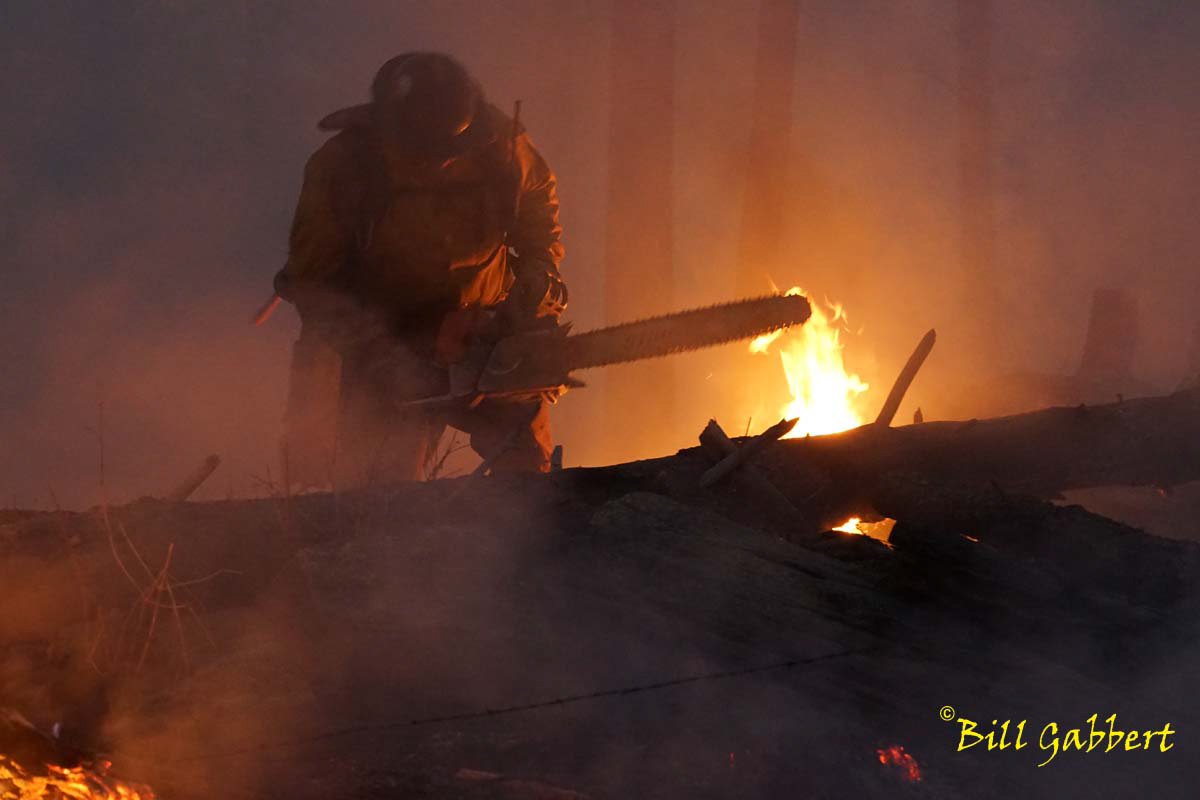
In an effort to provide for our readers information about positions the presidential candidates have taken on wildland fire issues, today we have the second article in the series. Earlier this month we searched the websites of the candidates and were able to find the issue addressed by only one, Mike Bloomberg, which we put in a February 15 article.
We wrote:
To be clear, Wildfire Today is not endorsing any candidates, but in an effort to inform voters we will be happy to write about all substantive written positions related to fire that are taken by presidential Candidates as long as they have more than 2 percent in a reliable nationwide poll on the election such as this one at fivethirtyeight.
We have already covered the incumbent’s plan, the proposed budget for next fiscal year.
After seeing that article one of our readers, Su Britting, informed us that she had seen a piece in the Desert Sun featuring the candidates’ responses to a fire-related question posed by a Research Scientist for the U.S. Forest Service who also teaches at the University of California at Davis.
Below is an excerpt from the article, used here with permission from Executive Editor Julie Makinen. The only part not included are a few introductory paragraphs written by the reporter, Sam Metz. The candidates’ statements in the Desert Sun article are included in their entirety.
…We enlisted Professor Malcolm North, a fire ecologist with the U.S. Forest Service who also teaches at UC Davis, to ask the candidates running in the Democratic Party’s presidential primary a question about wildfire policy.
North wanted to see how candidates would balance California’s need for more housing with the hazards of building in wildfire-prone regions and how they’d address concerns surrounding fire suppression and its potential to exacerbate the problem. Each candidate was given the same set of questions to answer within a specific timeframe. Some campaigns responded in the third person (e.g. “Senator Klobuchar believes …”) while other candidates responded themselves (e.g. “As president, I’ll invest …”). Candidates that are not featured did not provide a response.
Like most of the western United States, California’s wildfires are becoming more destructive with more severe weather, unchecked home building in fire-prone areas, and fire suppression that puts forests at greater risk for larger, more catastrophic fires in the future. As president, how would you do to help break this cycle for the sake of both people and ecosystems? — Malcolm North, Research Scientist, U.S. Forest Service, Mammoth Lakes, Calif.
Elizabeth Warren: Climate change is an existential threat to all life on this planet — and Californians are already seeing the dangers of climate change first hand. Elizabeth Warren is an original co-sponsor of the Green New Deal resolution and has more than 10 climate plans that detail how a Warren administration will achieve domestic net zero emissions by 2030.
Wildfires pose an especially serious threat to low-income communities, people with disabilities, and seniors. That’s why Elizabeth has committed to:
- Improving fire mapping and prevention by investing in advanced modeling with a focus on helping the most vulnerable — incorporating not only fire vulnerability but community demographics.
- Prioritize these data to invest in land management, particularly near the most vulnerable communities, supporting forest restoration, lowering fire risk, and creating jobs all at once.
- Invest in microgrid technology, so that we can de-energize high-risk areas when required without impacting the larger community’s energy supply.
- Collaborate with Tribal governments on land management practices to reduce wildfires, including by incorporating traditional ecological practices and exploring co-management and the return of public resources to indigenous protection wherever possible.
She’s also committed to prioritizing at-risk populations in disaster planning and response and strengthening rules to require disaster response plans to uphold the rights of vulnerable populations. A Warren administration will center a right to return for individuals who have been displaced during a disaster and while relocation should be a last resort, when it occurs, she is committed to improving living standards and keeping communities together whenever possible.
Pete Buttigieg: California’s devastating wildfires are one example of the accelerated impacts of climate change. This is one of the most pressing security challenges of our era and it will absolutely be a top priority under my administration. To stem the impacts of climate change my administration will get our country to net-zero emissions no later than 2050, by implementing a bold and achievable Green New Deal. We will enact a price on carbon and use the revenue to send rebates directly to Americans’ pockets. We will also quadruple federal clean energy R&D funding to invest more than $200 billion in developing new technologies as well as create three investment funds to spur clean technology development and fund locally-led clean energy projects, particularly in disadvantaged communities.
Promoting resilient infrastructure is crucial to preparing communities against climate change. The American Clean Energy Bank and Regional Resilience Hubs that I am proposing will finance local investments in resilient infrastructure. My administration will develop federal guidelines for investments in and implementation of new approaches, including nature-based solutions, that make our natural resources and communities safer and more resilient. We will also establish a National Catastrophic Extreme Weather Insurance (CEWI) program to provide stability to individuals and communities who experience the major disruptions caused by climate change and other natural risks such as earthquakes. We will build a resilient nation that can stand up to the extreme weather and sea level rise we are already facing, and lead the world in bringing our international partners and local leaders together to solve this crisis.
Tom Steyer: I began this campaign because despite several Democratic candidates talking about the climate crisis, the seriousness of the threat was not getting the attention it demanded. I am the only candidate who will make addressing climate change my number one priority as President of the United States. Climate change doesn’t just represent a serious threat — it is also a great opportunity to build a sustainable American infrastructure and an economy that restores prosperity to all Americans, not just the wealthy. In order to break the cycle of the catastrophic effects of climate change, we need to build resilient infrastructure and a renewable economy. We also need to invest in individual ecosystems (forests, lakes, oceans) in the context of climate change. This will mean undoing the negligence of the Trump administration’s policies and creating collaboration between the states and the federal government to address the problems of designing, building and maintaining climate-resilient communities.
As part of my Justice Centered Climate Plan, I will invest nearly $500 billion in the upkeep and protection of our watersheds, wetlands, national parks, and forests — and this includes fire management as well as protecting our clean drinking water. Because while some of the impacts of climate change are already here, there are levelheaded preventative measures we can take to protect ourselves and our forests from the worst dangers. My plan puts $555 billion into developing climate-smart communities and housing and an additional $755 billion into adaptation, resilience, and green infrastructure. This will ensure that the people who are displaced from fires and flooding have affordable places to live with access to green space. And it will also ensure that they have good-paying jobs building our new climate-resilient infrastructure, protecting our lands and waters, and serving communities hit by the climate crisis as long-term disaster recovery workers.
Bernie Sanders: We’re already seeing the devastating effects of climate change. In California, 15 of the 20 largest fires in the state’s history have occurred since 2000. We must invest now in mitigating these more frequent and severe wildfires, making our infrastructure more resilient, and preparing for disaster response. We must change our framework of fire suppression and forest management to take the whole local ecosystem into account, including the rural communities who are most vulnerable.
In California, developers are building houses in fire hazard zones, a move partially driven by the housing shortage. Bernie is committed to fully closing the 7.4 million unit shortage of affordable housing to guarantee housing to all as a right. We will work to ensure housing growth is climate-resilient, with experts and impacted communities included every step of the way.
We’ll expand the wildfire restoration and disaster preparedness workforce. We’ll increase federal funding for firefighting by $18 billion to deal with the increased severity and frequency of wildfires. Furthermore, we must facilitate community evacuation plans that include people experiencing homelessness, and increase social cohesion for rapid and resilient disaster recovery to avoid the use of martial law and increased policing in disaster response.
We’ll also amend the Stafford Act to ensure that FEMA ensures that recovery and rebuilding efforts make affected communities stronger than they were before the disaster so they are more resilient to the next disaster.
Michael Bloomberg: First and most importantly, we’ve got to act aggressively to curb the carbon pollution and climate change that is like pouring accelerant on our western forests, making fires bigger and more catastrophic — this will be a top priority for my presidency. In addition, we’ve got to transition from the old fire suppression approach to managing our forests to restore healthy ecosystems that are inherently more resilient to catastrophic fire.
I’m calling for an effort on the scale of FDR’s response to the Dust Bowl, making this a top priority for the Forest Service. I will direct them to work with other federal land agencies, states, tribes, and local communities to develop a far-reaching fire prevention and management plan for each state at risk, aiming to reduce the loss of lives and property by half within four years.
Jennifer Rabuck selected as NPS Wildland Fire Safety Specialist
The position has been vacant since 2017
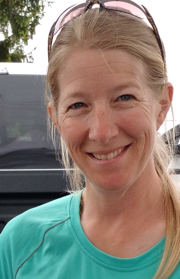
Jennifer Rabuck, a U.S. Forest Service zone fire management officer (FMO) on the Chequamegon-Nicolet National Forest in Hayward, Wisconsin, has been named as the wildland fire safety specialist for the National Park Service Branch of Wildland Fire. Jennifer fills the vacant position left when Chad Fisher became the wildland fire operations program leader in 2017.
Jennifer began her federal service on the Clearwater National Forest in Idaho in 1994 and moved into her first permanent full-time fire management position in 2002 at the Leopold Wetland Management District in Wisconsin. She gained experience as a prescribed fire specialist with the U.S. Fish and Wildlife Service before moving into her current position as zone FMO. Jennifer has detailed as the assistant forest FMO on the Superior National Forest and as a National Incident Management Organization Safety Officer. Her experience with facilitated learning analysis teams, as a national cadre member for the You Will Not Stand Alone course, as a family/hospital liaison, and with planning for critical incidents will be a great addition to the NPS.
“I’m very excited to have Jennifer join the Wildland Fire Operations Program” said Program Leader Chad Fisher. “She brings a depth and breadth of experience, along with a fresh perspective, to our work serving the parks and regions of the National Park Service and in our interagency endeavors.”
Jennifer will relocate to Boise, ID and begin her new duties March 29, 2020.
BLM plans to build 11,000 miles of fuel breaks
On Friday, February 14 the Bureau of Land Management (BLM) released the Final Programmatic Environmental Impact Statement (PEIS) for Fuel Breaks in the Great Basin. This Final PEIS provides for the construction and maintenance of a system of up to 11,000 miles of fuel breaks within a 223 million acre area to aid in the control of wildfires in portions of Idaho, Oregon, Washington, California, Nevada, and Utah.
The Preferred Alternative outlined in the PEIS analyzes manual, chemical and mechanical treatments, including prescribed fire, seeding, and targeted grazing to construct and maintain a system of fuel breaks. These treatments would be implemented along roads and rights-of-way on BLM-administered lands to minimize new disturbance and wildlife habitat fragmentation and to maximize accessibility for wildland firefighters.
The estimated total cost of developing and producing the PEIS was $2.3 million.
“Wildfires pose an enormous threat to rangelands in the Great Basin – rangelands that people depend on for both recreational opportunities and their livelihoods, and that wildlife rely on for habitat,” said BLM Deputy Director for Policy and Programs William Perry Pendley. “Fuel breaks are one of the most important tools we have to give wildland firefighters a chance to safely and effectively contain rapidly moving wildfires and potentially reduce wildfire size.”
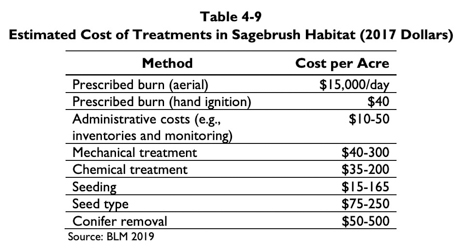
Wildfires in sagebrush communities in the Great Basin states are becoming more frequent and larger, fueled by large, unbroken swaths of grasses, brush and other vegetation. Over 13.5 million acres of historically sagebrush communities on BLM land burned within the project area between 2009 and 2018. Wildfires that consume sagebrush provide the opportunity for invasive annual grasses to increase, making future large and severe wildfires more likely.
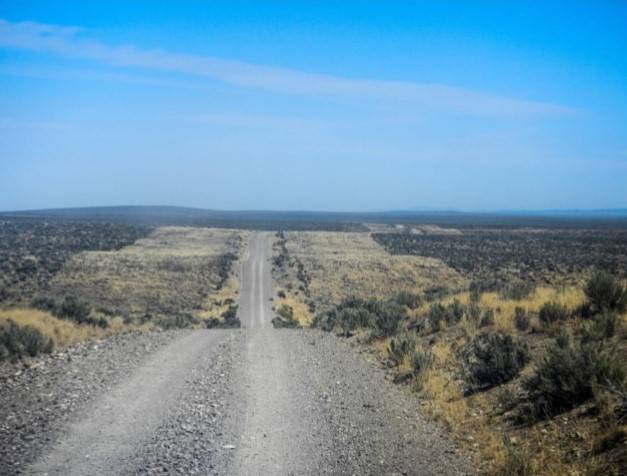
The concept behind fuel breaks is to break up or fragment continuous fuels by reducing vegetation in key locations. When a wildfire burns into a fuel break, the flame lengths decrease and its progress slows, making it safer and easier for firefighters to control.
An electronic copy of the Final PEIS and associated documents is available for public review for 30 days on the BLM Land Use Planning and NEPA register at https://go.usa.gov/xnQcG. Other documents related to the EIS are at the BLM’s ePlanning website. The BLM will issue a Record of Decision after the end of the public review period.
Fire management and the presidential election
As we have said often here at Wildfire Today, we do not get into politics unless it directly affects firefighters or fire management. And there is nothing more political than a presidential election.
However, I ran across an op-ed written by Ken Pimlott, former chief of the California Department of Forestry and Fire Protection, who mentioned that one candidate has a wildfire plan. I do not recall any major candidate saying much about wildland fire, so it got my attention.
To be clear, Wildfire Today is not endorsing any candidates, but in an effort to inform voters we will be happy to write about all substantive written positions related to fire that are taken by presidential candidates as long as they have more than 2 percent in a reliable nationwide poll on the election such as this one at fivethirtyeight.
We have already covered the incumbent’s plan, the proposed budget for next fiscal year.
The candidate Chief Pimlott wrote about is Mike Bloomberg. Below is the text from his “Wildfire Resilience” webpage:
Lead a Nationwide Effort to Strengthen the Nation’s Resilience against Wildfires
Responsibility for preventing and fighting fires crosses multiple jurisdictions and interests — federal, state, local, private and tribal. In the West in particular, multiple landowners can be involved between the point where a fire starts and where it causes the most damage. This kind of large-scale action demands strong leadership and coordination. To ensure our country is protected from future harm and is equipped to mitigate future damages, Mike knows that it’s up to the federal government, as the majority landowner of forests in the West, to take the lead. Mike’s plan will:
- Make fire resilience a top priority of the U.S. Forest Service, as well as other federal land management agencies. Task the agency with coordinating the development of a far-reaching new plan for firefighting and fire prevention for each Western state.
- Increase collaboration among all levels of government, and public and private sectors. The Forest Service will work with other federal partners, local communities, state and local agencies, tribal leaders, environmental groups, private timber companies, rural land owners, utilities and the insurance industry to develop region- or state-specific plans with the goal of reducing life and property loss by half within four years.
- Improve community resilience and prevent redlining by the insurance industry. Collaborative fire protection plans will include measures to reduce risk to communities and property, minimize damages in case of fire, and thereby improve the chances of getting or maintaining insurance, so that current homeowners who don’t have alternatives aren’t left without the ability to insure for disasters.
Continue reading “Fire management and the presidential election”
Report released for Spring Coulee Fire fatality in Washington
An Assistant Fire Chief died in an entrapment. The fire burned 107 acres in 2019 near Okanogan, Washington.
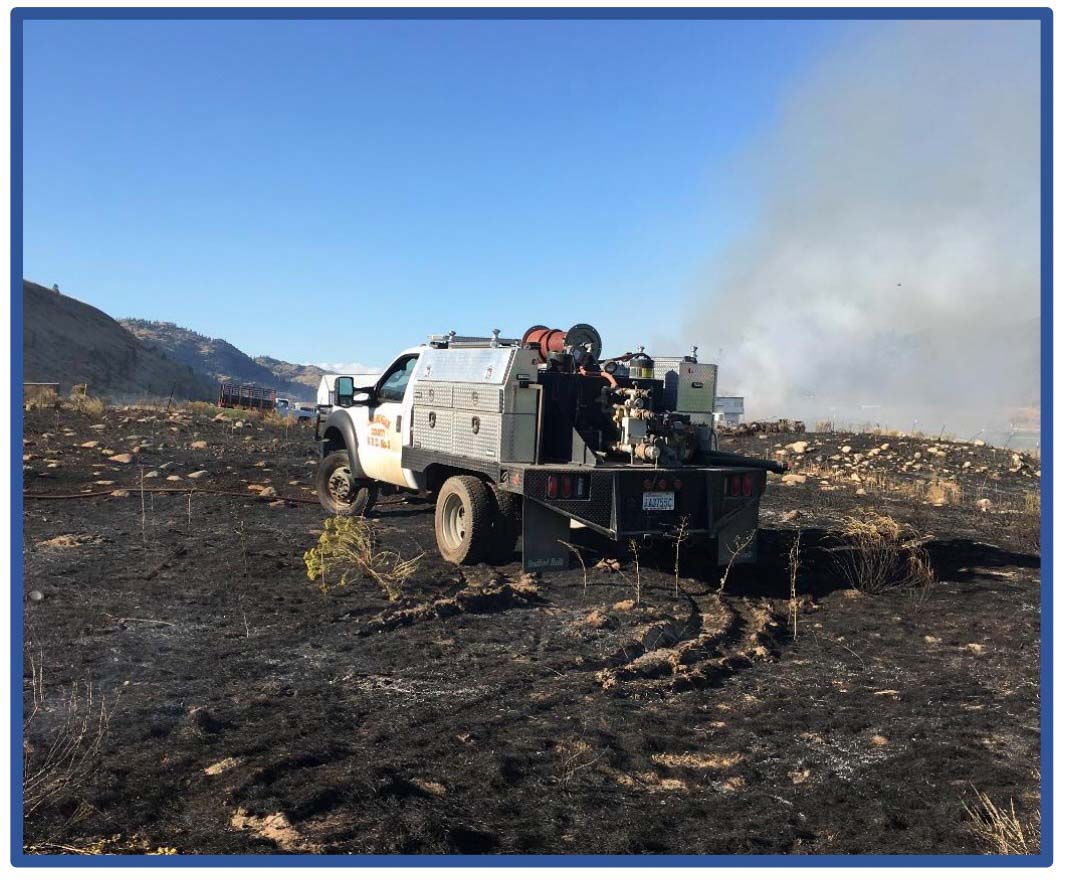
A facilitated learning analysis has been released for a burnover and entrapment on the Spring Coulee Fire September 1, 2019 near Okanogan, Washington. A month after suffering burns over 60 percent of his body, Assistant Fire Chief Christian Dean Johnson, 55, passed away in a hospital as a result of his injuries.
The events unfolded quickly on September 1. After being reported at about 1600 the Incident Commander sized it up nine minutes later at five to ten acres spreading rapidly in grass and brush.
Wearing his turnout pants, Assistant Chief Johnson loaded into B341 (a 2012 Ford F450 Type 6 Brush Truck) and stowed his turnout jacket on the back of the truck between the cab and a rear-mounted storage compartment. At 1615 the Chief arrived at the fire with another firefighter. Eleven minutes later a MAYDAY was called for the entrapment.
Upon arrival Chief Johnson and the firefighter, identified as the “external firefighter” in the report, began a mobile attack, with the Chief driving the truck and the firefighter operating a nozzle. They were working along an old cat trail from an earlier fire, identified as “Old Fireline” on the aerial photo. 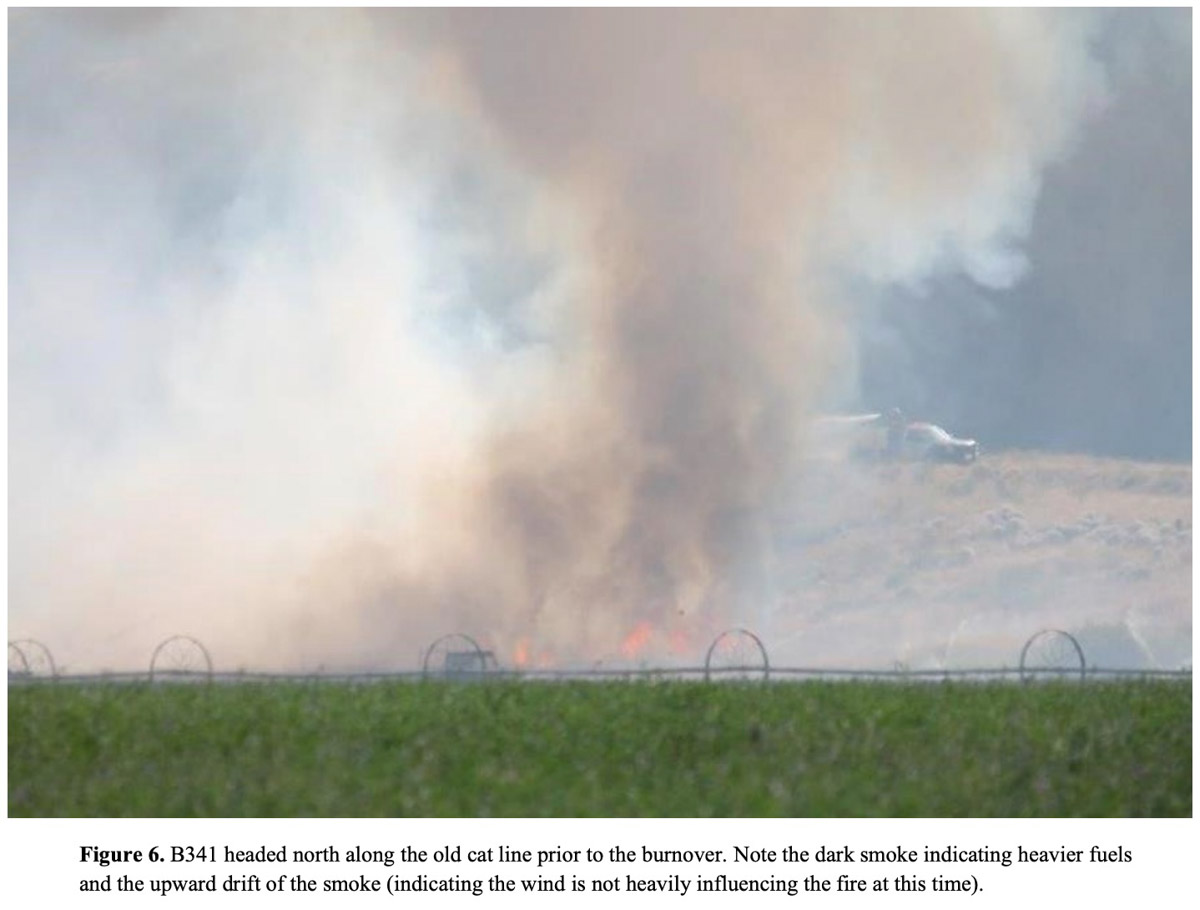
After a few minutes the wind direction shifted from blowing parallel with the cat line, generally south, to southeasterly and aligned with the small swale shown on the aerial photo. This pushed the fire rapidly toward the road and the two firefighters. The Chief yelled at the other firefighter to drop the hose and move.
From the report:
The exterior firefighter didn’t open the passenger door; fire was immediately at his back and had caught the passenger mirror on fire. He ran around to the driver’s side of B341 and climbed on the outside of the truck again. As fire moved under B341, Assistant Chief Johnson attempted to drive B341 away from the area. After traveling five or six feet, B341 “lurched” and then became immobilized. With flames rolling up the exterior firefighter’s legs, visible on the passenger side of the vehicle itself, under the truck and in front of them, both the exterior firefighter and Assistant Chief Johnson exited the vehicle to escape the fire. Assistant Chief Johnson and the exterior firefighter ran toward the old cat trail at slightly different angles. In Assistant Chief Johnson’s path, hidden by vegetation, lay a substantial field of rocks and metal debris (Figure 9). While it is impossible to know for certain, it is thought Assistant Chief Johnson may have become entangled in the debris and was overtaken by fire.

The exterior firefighter, with fire surrounding him—and at times reaching up between his legs—was able to escape the advancing fire. The exterior firefighter and the fire reached the road at approximately the same instant.
As it was starved of fuel, the roaring and crackling of the fire quieted and the exterior firefighter from B341 immediately turned around to head back into the black and reestablish contact with Assistant Chief Johnson. The firefighter located Assistant Chief Johnson approximately 150 feet from the exterior of B341. The MAYDAY was called at 1626.
[…]
Just before 1655, the surface winds shifted to a south-southwesterly direction. This pushed a “finger” of fire north of the structures on the eastern flank and increased fire behavior in the area. At approximately 1655, the engine on the eastern flank requested air support as “we are trapped here” and they needed water to continue effective structure protection. A helicopter in the area had already spotted the flare-up and was able to deliver water within seconds of the radio call. At least one additional water drop was completed by a [single engine air tanker].
The report does not specify exactly where the first burnover occurred, but there are clues that it was near the “Swale.”
During the burnover the Chief was not wearing his turnout jacket, which after the incident was still stowed behind the truck’s cab. The report concluded that the lack of personal protective equipment above the waist contributed to the severity of his injuries.
The external firefighter was quoted as saying, “The only reason I am alive is because I had all this [structural] gear on. Without that I wouldn’t have even made it back to the truck.”
The investigation found a low oxygen code recorded in the truck’s electronic system. There was no time associated with the code, so it can’t be determined if it occurred while the vehicle was surrounded by fire or if it was the cause or symptom of the truck being immobilized.
There have been a number of incidents in which firefighting vehicles stalled in very dense smoke.
- In 2008 three firefighters suffered burn injuries in North Dakota after their truck stalled due to what was thought to be oxygen starvation.
- The Pratt Tribune reported in 2010 that “smoke suffocated the carburetor” causing the engine on a brush truck to stall. The firefighters on the truck escaped unharmed into the black, or previously burned area, but the truck was not as fortunate.
- The report on the death of one firefighter at the 2011 Coal Canyon Fire in South Dakota does not speculate why the engine on a truck died in heavy smoke as the fire overran the vehicle with two people inside. Two firefighters were entrapped in the engine. One remained entrapped and died; the other escaped.
Personnel involved in the Spring Coulee Fire highlighted six core lessons. These lessons are focused on communications, training, medical pre-positioning and medical evacuation coordination, vehicles, access, and personal protective equipment.
The Epilog is from the report:
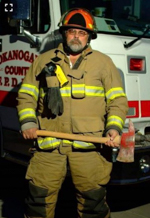
“Christian Johnson, 55, of Okanogan, Washington passed away Wednesday, October 2, 2019 from injuries sustained in the Spring Coulee Fire south of Okanogan. Christian was born in 1963 in Salem, Oregon, to James and Margaret Johnson. He grew up in Salem, graduating from South Salem High School in 1982. Christian began college at Oregon State University, but felt he had a larger calling and joined the Army. Christian served from 1983-1986 in the 82nd Airborne Division where he achieved the rank of Sergeant. After being honorably discharged, Christian continued his duty by joining the Oregon Army National Guard. He then returned to college and graduated from Chemeketa Community College in Salem in 1988 with an A.A. in Building Inspection Technology. Christian accepted a position as a building inspector in Washington for Okanogan County and later transferred as building official and permit administrator to the cities of Oroville, Tonasket, and Okanogan. He also transferred to the Washington National Guard where, along with his Charlie Company of the 1-161 Infantry Regiment, he deployed to Iraq. Christian served from November 2003–April 2005. Upon returning home, Christian retired from the National Guard after a total of 22 years of service. In Okanogan, Christian found another call to duty and in May of 1999, he joined the Okanogan Fire Department where he served as the Assistant Fire Chief and Secretary of the Okanogan Volunteer Fire Department Association.”
May Chief Johnson rest in peace.

